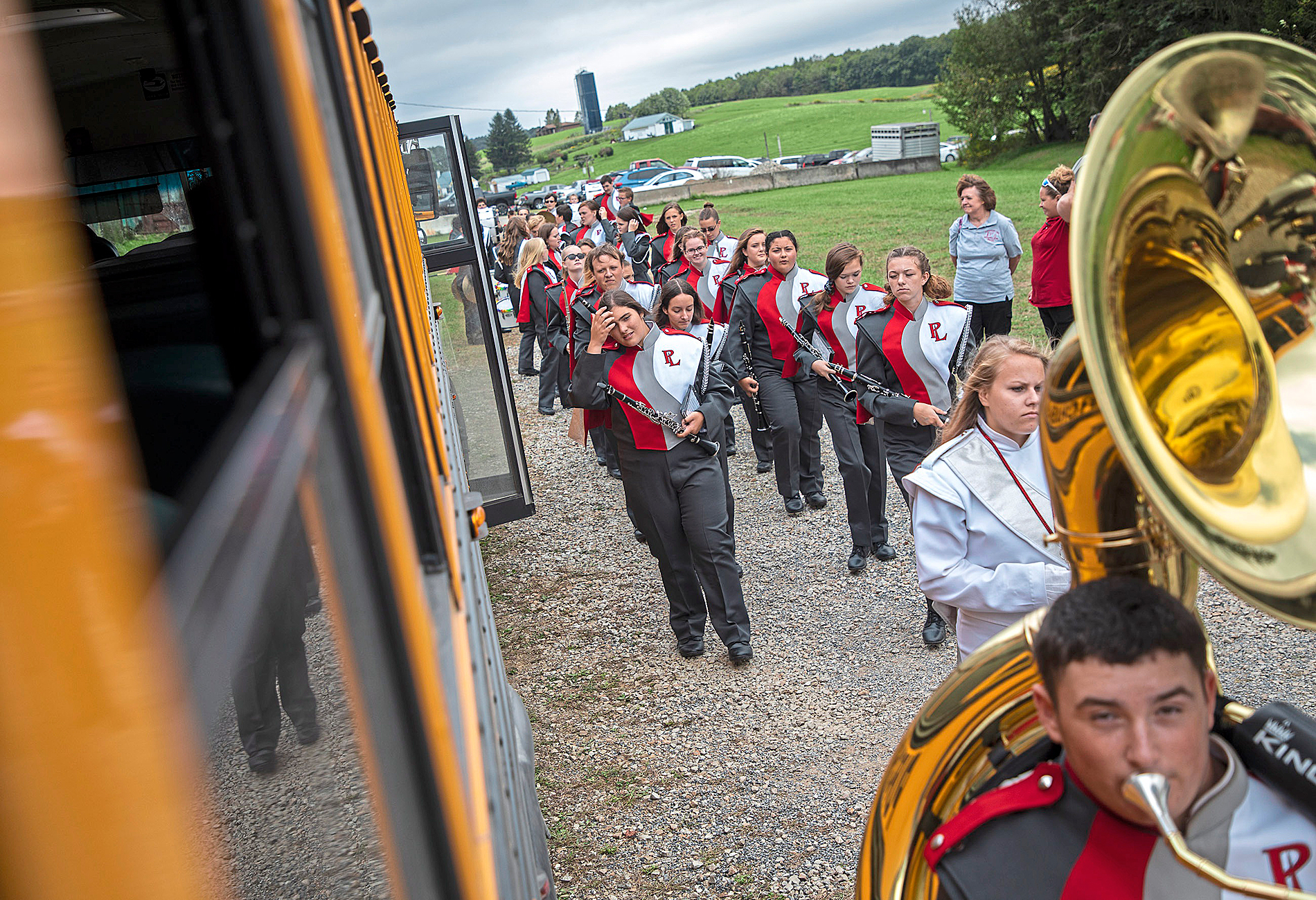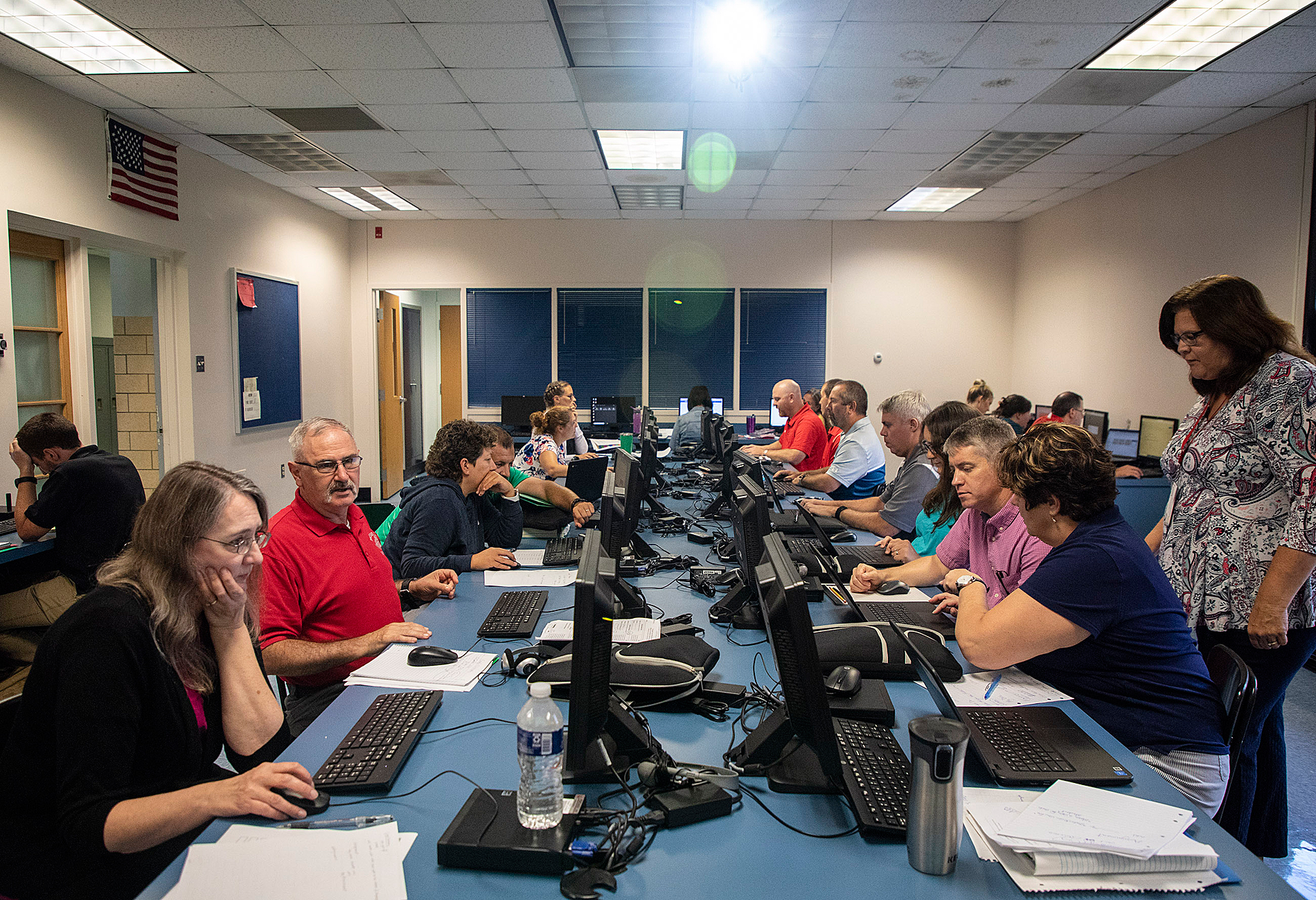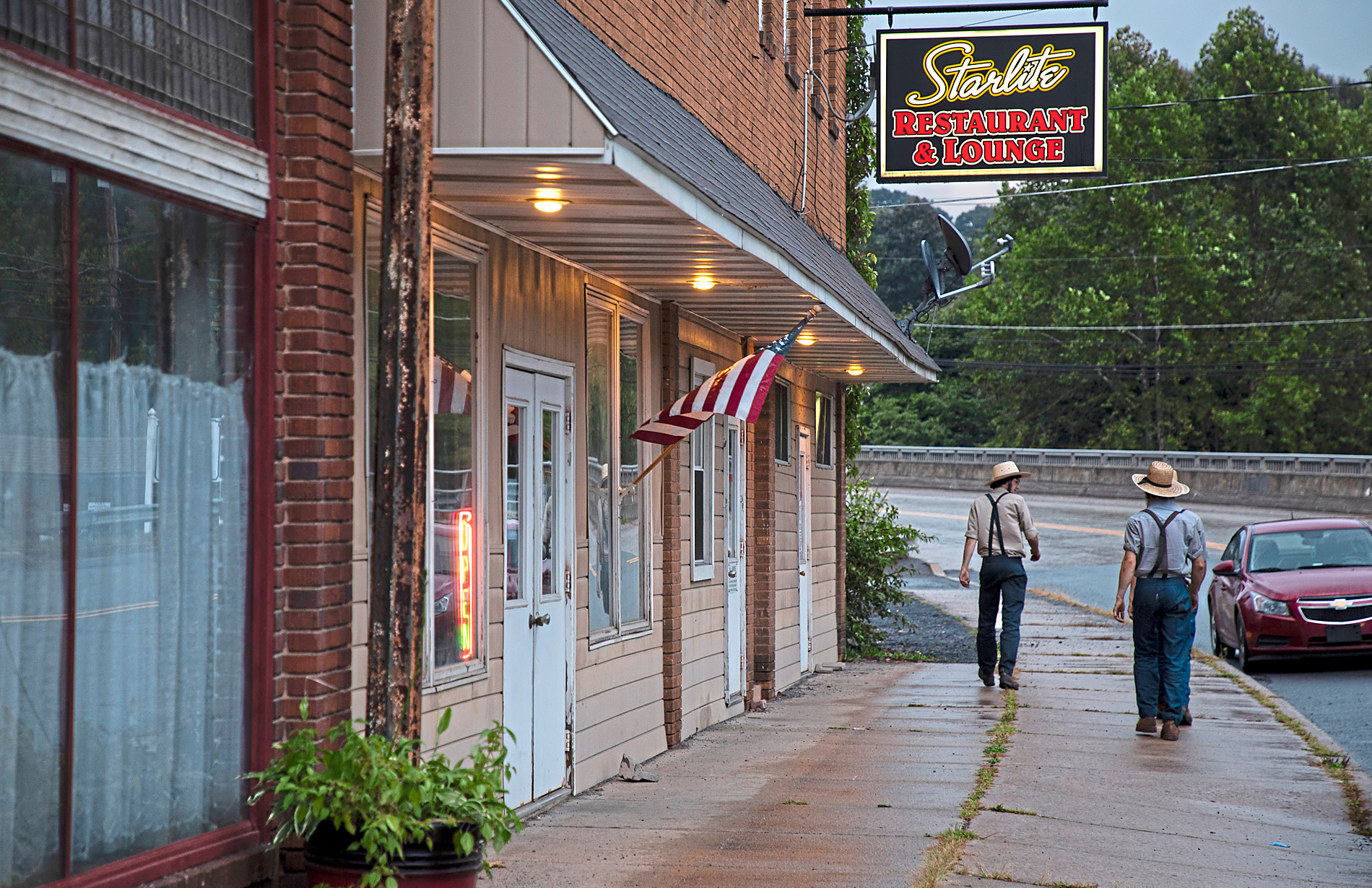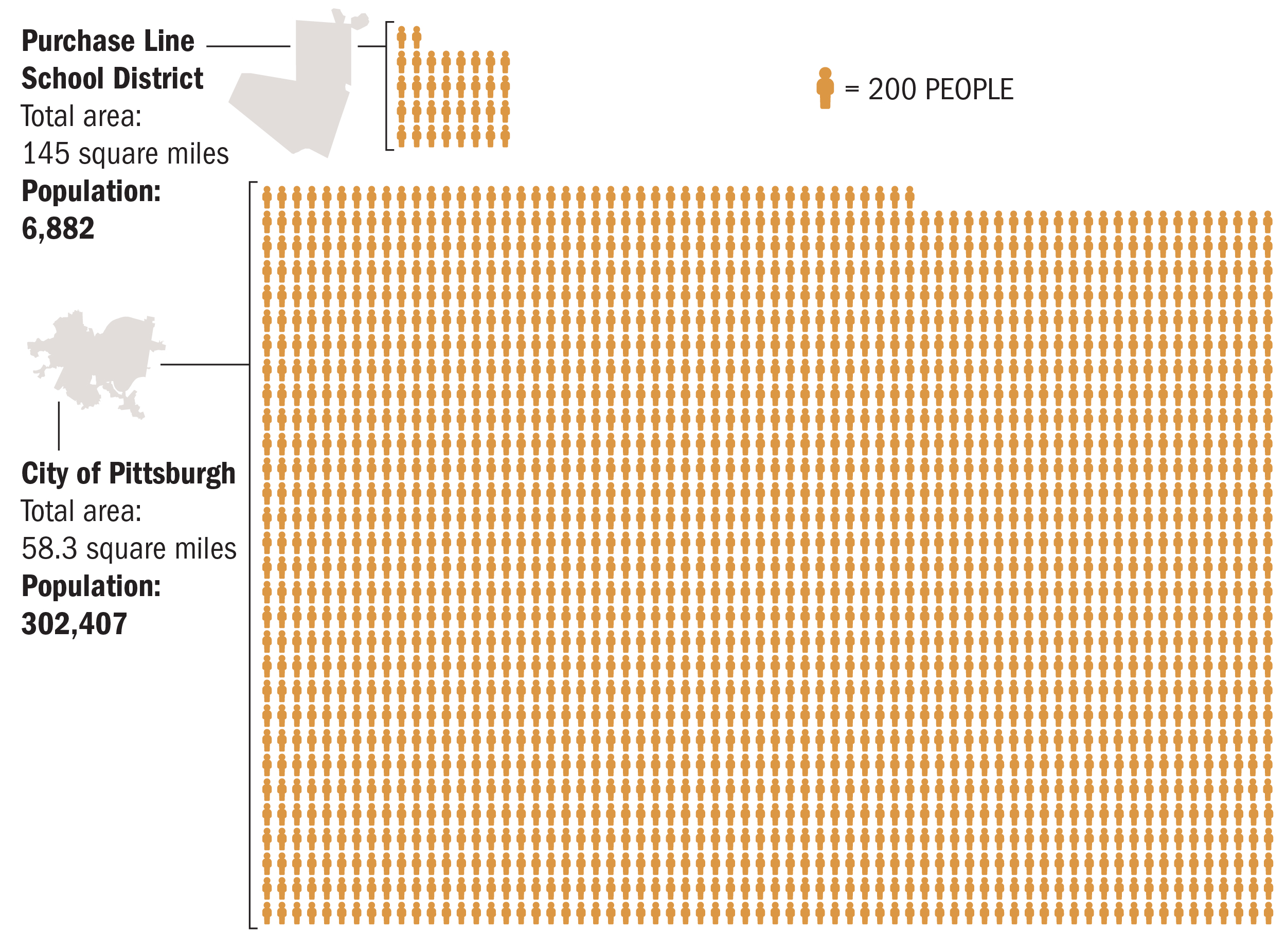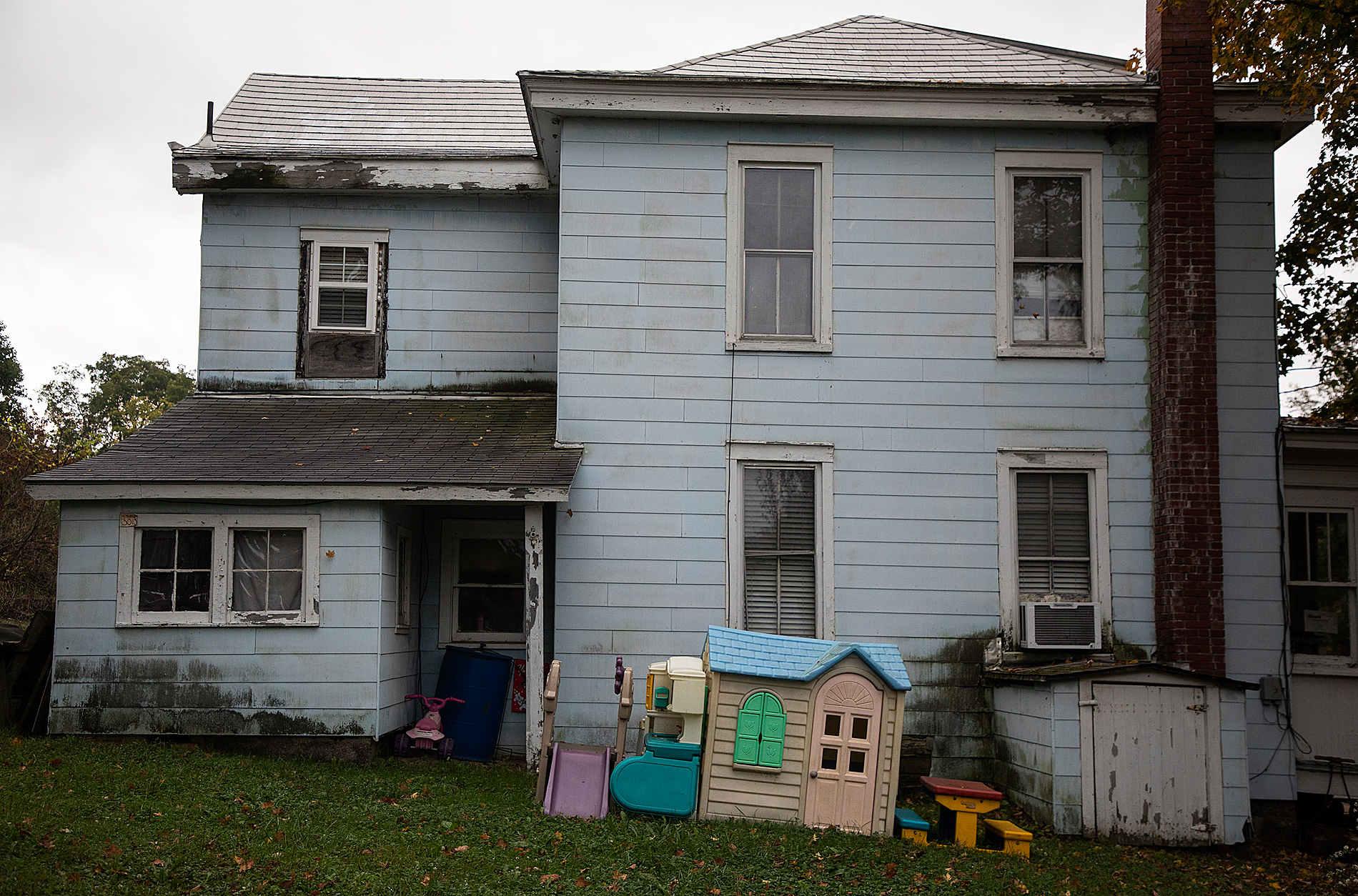The crisis is acute in some parts of Indiana County, where probably hundreds of square miles of the 834-square-mile county lie outside the modern age, according to Byron Stauffer, executive director of the Indiana County Center for Economic Operations.
Internet service providers want the biggest bang for their buck, which means skipping over the hollows and back roads to serve clusters of customers in bigger towns and urban areas. “It’s a matter of return on investment,” Mr. Stauffer said.
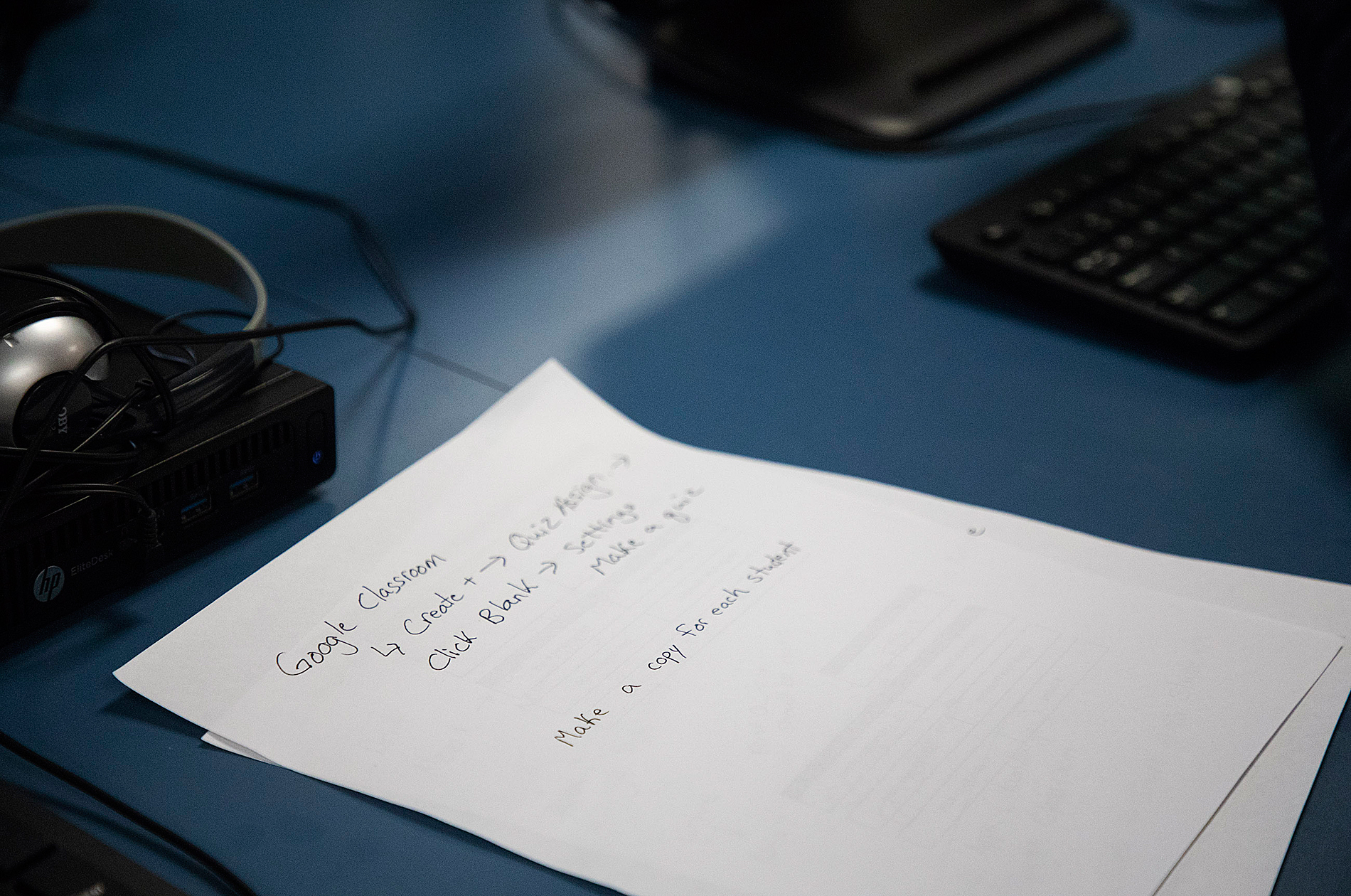
A group of Purchase Line Junior Senior High School teachers learned to teach with online applications such as Google Classroom. On the first day of school, seventh and eight grade students were given Chromebook laptops. The school, in Commodore, is moving toward a more digital curriculum. (Jessie Wardarski/Post-Gazette)
Putting specific numbers on the economic cost of poor internet service is challenging, but there’s little doubt that commerce is hobbled when small businesses and consumers can’t connect easily online. That is especially true today, when even simple credit card transactions depend on an online link and websites and social media have become the core of modern advertising.
Indiana County’s connectivity issues didn’t deter Philadelphia-based clothier Urban Outfitters from recently opening an 800,000-square-foot fulfillment center in White Township, just outside Indiana, Pa. The operation — key to the retailer’s push into prompt, direct-to-consumer sales — was expected to create 225 jobs. The company didn’t return a request for comment about the operation.
And internet access isn’t a problem 17 miles from the Purchase Line School District at the Indiana University of Pennsylvania. But, in what is a concern for the local economic development team, the college — the county’s biggest employer — has seen enrollment slide 26% between 2012 and 2018, a trend that partly reflects a trend among state institutions of higher education.

File photo of Indiana University of Pennsylvania. (Keith Boyer)
As Mr. Stauffer looks for more economic development opportunities, he wonders about the difference that widespread public broadband access could make across Indiana County if it were easy to “be part of the 21st century.”
“Imagine if everything else was equal: How many people would want to live here in the rural area,” he said.
A 2018 study by the Purdue University Center for Regional Development concluded that every $1 invested in broadband returns nearly $4 to the economy.
The link between online connectivity and economic growth is well established, said Darrell M. West, director of the Center for Technology Innovation at the Brookings Institution.
“Broadband is absolutely essential for job creation and economic development,” said Mr. West. “There is a strong tie there. Counties without good broadband access will just fall further behind.”
